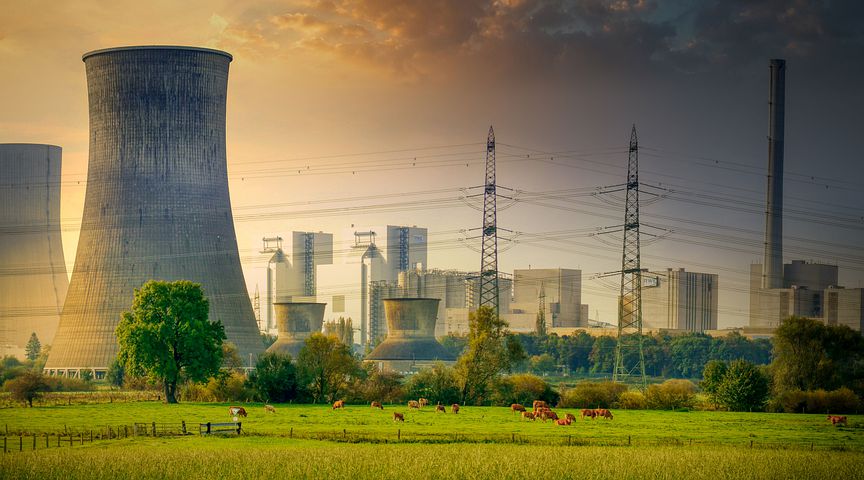UAE's nuclear power journey providing lessons for newcomer countries
The IAEA this week began conducting an Integrated Nuclear Infrastructure Review (INIR) to assess nuclear infrastructure development in Uzbekistan, which plans to deploy two large nuclear reactors by 2030.

Around 30 so-called newcomer countries are considering or embarking on nuclear power to drive sustainable development and reduce emissions, but nuclear power requires a major commitment. As the IAEA resumes in-person review missions for newcomers this week, the recent journey by the United Arab Emirates in developing a new nuclear power programme is providing important lessons for like-minded countries.
The IAEA this week began conducting an Integrated Nuclear Infrastructure Review (INIR) to assess nuclear infrastructure development in Uzbekistan, which plans to deploy two large nuclear reactors by 2030. The INIR mission is the first to be conducted in person since the COVID-19 pandemic swept the globe in spring 2020. INIR missions are also planned later this year to Kenya, Sri Lanka and Uganda.
The UAE, which successfully connected its first reactor to the grid last year, worked with the IAEA for a decade including by hosting INIR missions to support the development of a safe and sustainable nuclear power programme.
“The introduction of nuclear power in the UAE was made possible owing to four key elements: government support, including a long-term nuclear energy policy; adoption of the IAEA’s comprehensive Milestones Approach; strong inter-organizational cooperation; and robust community support,” said H.E. Mohamed Al Hammadi, CEO of the Emirates Nuclear Energy Corporation (ENEC), the UAE’s nuclear energy programme implementing organization.
“Together with all of the technical work and capacity building, continuous engagement with the public and transparency from the outset of the programme has been a vital component of our success,” he added during a recent IAEA webinar about how the Gulf country of nearly 10 million people met an array of challenges to launch a programme that will meet 25% of its electricity needs.
Besides the UAE, Belarus also became a nuclear power operating country last year when it connected its first reactor to the grid after years of following the IAEA’s Milestones Approach. Meanwhile, Bangladesh and Turkey are next in line, building their first power reactors with commissioning of both planned for 2023. In Egypt, a construction license is pending for the country’s first nuclear power plant, with an eye to commissioning by 2026.
The Barakah Nuclear Power Plant, which will have 5.6 GW of generating capacity once all four of its Korean-designed APR-1400 reactor units are operational, is the UAE’s largest decarbonization project. The country is diversifying its energy sector with low carbon sources to cut greenhouse gas emissions by 23.5% relative to business as usual levels by 2030. To get there, nuclear power – in concert with renewables – will play a key role.
The webinar on 29 April, attended by 529 participants from 72 countries, illustrated the holistic, collaborative approach required for a successful nuclear power programme. That includes establishing an independent regulator and developing guidance, integrated management systems and license requirements.
“We implemented a systematic programme management approach to creating a dynamic, independent regulatory body following the highest safety standards, which allowed for the submission of a license application for siting and construction at the end of 2010, just over a year after FANR was established,” said Christer Viktorsson, Director General of the Federal Authority for Nuclear Regulation (FANR), the UAE regulator. “Our work was supported by 11 international review missions led by the IAEA, and these were instrumental in FANR’s development.” Having a strong national strategy in place before embarking on a nuclear power programme is crucial, he added.
Speakers at the webinar also stressed the importance of bolstering training capabilities for human resource development, with the UAE investing in limited and full scope simulators to train staff conducting safety-related activities. Speakers also included engineer Ali Al Hammadi of Barakah NPP operator Nawah Energy Company as well as Nasser Al Nasseri of Barakah One Company and Ahmed Alkaabi, a professor at the UAE’s Khalifa University.
The university, which offers undergraduate and graduate degrees in nuclear engineering, was designated as an IAEA Collaborating Centre in October 2017. The university has worked with the IAEA on a range of initiatives, including a training course on nuclear infrastructure development last year.
Unit 1 at Barakah, located in Abu Dhabi, entered commercial operation last month after reaching 100% power in December. Fuel loading is complete for Unit 2, which is due to begin operations later this year. Construction on Units 3 and 4 is in the final stages.
“The IAEA has been an important partner in our efforts towards the development and implementation of our nuclear energy programme, providing important guidance and essential technical support on developing all areas of the nuclear infrastructure,” said H.E. Ambassador Hamad Alkaabi. “The Milestones Approach has been a key reference for the UAE roadmap on nuclear infrastructure development.”
The IAEA supports all interested countries in preparing for the introduction of nuclear power, including through peer review services such as INIR missions, training courses and publications, Mikhail Chudakov, IAEA Deputy Director General and Head of the Department of Nuclear Energy, said in opening remarks to the webinar.
“We supported the UAE extensively as they worked to bring their inaugural nuclear power reactor online, including by conducting the first-ever INIR Phase 3 mission in 2018.” Throughout the process, the UAE has been open and receptive to constructive feedback, and this is reflected in the success of their programme, he added.
Milestones Approach
The IAEA’s Milestones Approach is a key reference for newcomers. It supports countries in creating an enabling environment for a successful nuclear power programme and to understand, and prepare for, the associated commitments and obligations. This result-oriented approach comprises three phases (consider, prepare, construct), three milestones (decide, contract, commission) and 19 infrastructure issues to be addressed in each phase, as among others nuclear safety, nuclear security, safeguards, legal and regulatory frameworks, radioactive waste management, human resource development and stakeholder involvement.










